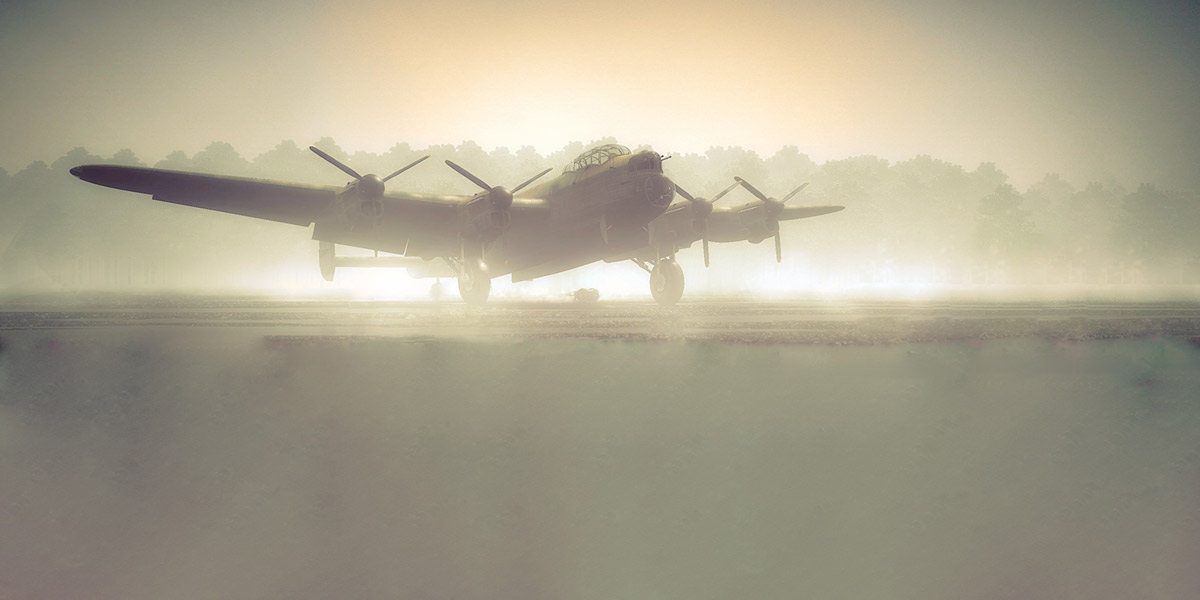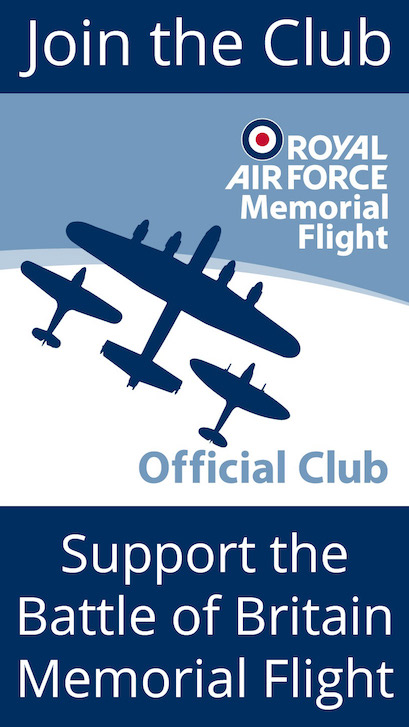Black Thursday 16th December 1943
Header image: As the Lancasters’ take-off time approached in the late afternoon of 16th December 1943 weather conditions were worsening and fog seemed likely, but was not forecast.
‘Black Friday’ is now a well-known phenomenon in the UK and America, with sales bargains galore supposedly on offer, but 75 years ago the word ‘black’ attached to a day of the week had an entirely different and tragic meaning. Thursday 16th December 1943 became RAF Bomber Command’s ‘Black Thursday’ when almost 300 RAF airmen lost their lives that night, half of them the victims of cruel British winter weather rather than enemy action.
On the night of 16th December 1943 RAF Bomber Command mounted another raid on the German capital of Berlin, this time with 483 Lancasters and 15 Mosquitos. The Lancasters took off from their bases in England between 16:00 and 17:00 for the seven and a half hour flight to Berlin and back. Their route led directly across the North Sea, over Holland and Northern Germany. The Germans were able to plot the bomber stream with great accuracy, to guess the target, and to direct night fighters to intercept the bombers. Although the bomber stream shook off the pursuers on the return flight, by taking a northerly route over Denmark, 23 Lancasters were shot down over enemy occupied territory, with the deaths of 148 men, whilst 17 bombers returned with damage from enemy flak or fighters.
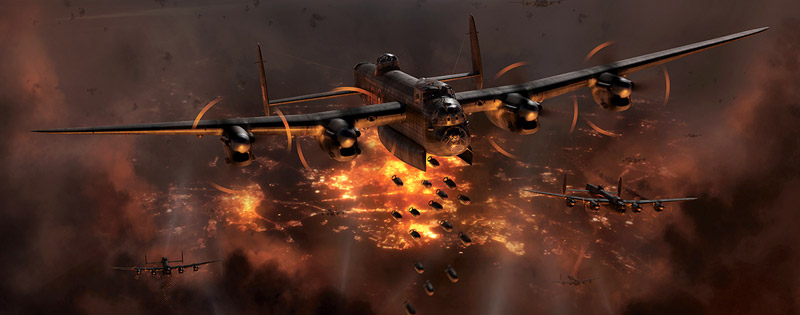
The raid was effective to some degree; damage to the Berlin railway system was extensive and 1,000 wagon-loads of war material destined for the Eastern Front were held up for six days, the National Theatre and the building housing Germany's military and political archives were both destroyed. The effect of the bombing campaign against Berlin had now made more than a quarter of the living accommodation in the city unusable.
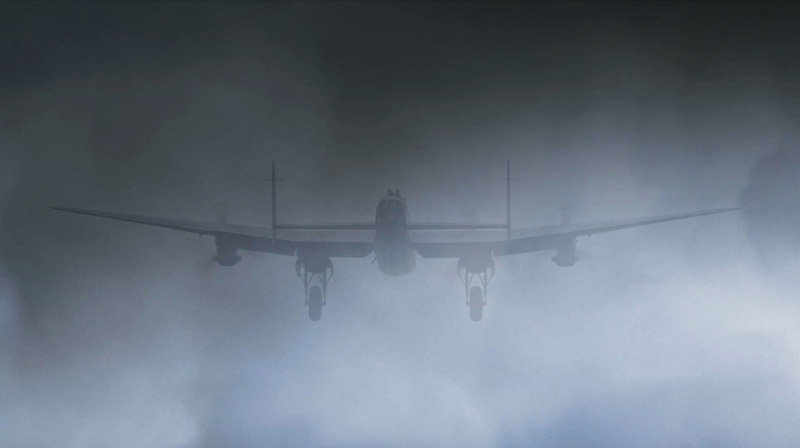
When the surviving bombers returned to England their crews found that, in many cases, their airfields were shrouded in thick fog and very low cloud. In some places it was a real ‘pea-souper’, with extremely poor visibility in which driving a car would be difficult, let alone trying to land a heavy bomber, possibly with damage, at 100 mph. Due to the cloudy conditions en route the crews had to rely on dead reckoning navigation and the Gee radio navigation aid to find their bases and then had to attempt to land using the Standard Beam Approach (SBA). Referred to as “landing on the beam”, SBA employed signals emitted by beacons in line with the main runway. In practice, SBA approaches in these conditions were extremely difficult to complete successfully. At approach speed a Lancaster would cross the airfield in little more than 30 seconds if incorrectly lined up or if the pilot could not see the runway. The margin for error was exceedingly small and each failed attempt brought an increase in danger as the exhausted crews burnt up their remaining petrol, whilst 12 to 15 other aircraft were stacked up at different heights in the hold all running short of fuel and all wanting to get down as quickly as possible, creating a real risk of collision.
To make matters worse, the barometric pressure had changed considerably since take-off and the crews had then been passed an incorrect altimeter setting by radio, which in some cases gave an altimeter error of up to 1,000 feet.
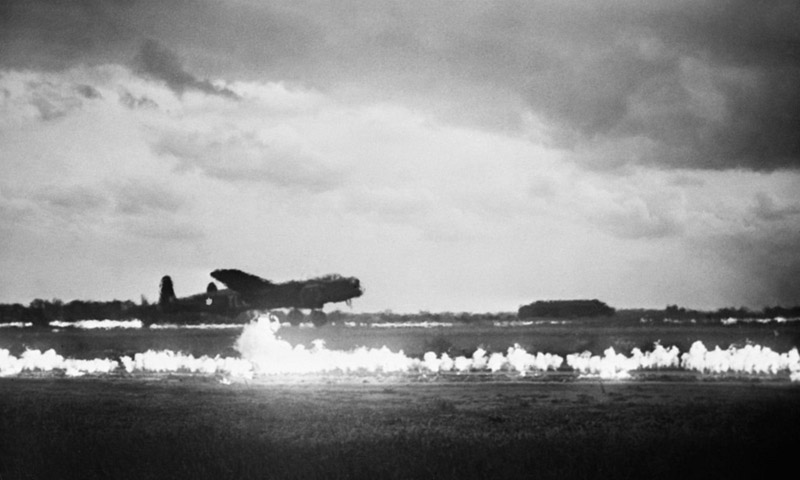
The new Fog Investigation and Dispersal Operation (FIDO) system was operational at only three airfields: Graveley in Huntingdon, Downham Market in Norfolk, and Fiskerton, close to Lincoln. FIDO was a system of large pipes laid down both sides and across the threshold of the main runway on each of these airfields, carrying thousands of gallons of petrol. When the pumps were running, a fine jet of petrol from holes in the pipes could be set alight, creating a flare path and a wall of flame down the sides of the runway, the heat being intended to disperse fog and low cloud. Landing with FIDO could be a frightening experience with considerable turbulence caused by the heat and the obvious risk from the fire if the aircraft did not remain on the runway. Nonetheless, the FIDO system saved several aircraft that night when they were diverted from fog-bound airfields.
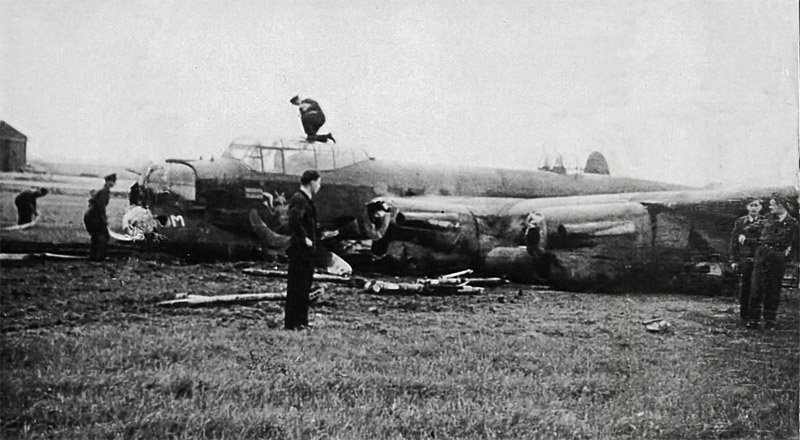
Inevitably, there were crashes as crews flew into the ground attempting to land or simply ran out of fuel. Some crews elected to bale out, their aircraft also crashing, and two Lancasters, one from 103 Squadron and one from 576 Squadron, were lost when they collided in mid-air over Ulceby in Lincolnshire. The final tally registered 43 aircraft in total lost in crashes that night; losses due entirely to the weather that far outweighed those caused by flak or night fighters over enemy territory. Around 150 Bomber Command aircrew died in these crashes – young men who did not live to see Christmas in 1943 – and an additional 40 were injured.
The BBMF’s Lancaster, PA474, currently wears the markings of 460 Squadron’s W5005 ‘AR-L “Leader”, with its bagpipe-playing kangaroo nose art on the port side. 460 Squadron sent 20 Lancasters on the operation on 16th December 1943, although W5005 was not one of them. Three crashed on return due to the fog, although miraculously only one man was killed, Pilot Officer Garment RAF, the rear gunner on Warrant Officer Stafford (RAAF)’s crew whose Lancaster crashed near Caistor. Their flight engineer, Sergeant Dixon, was seriously injured.
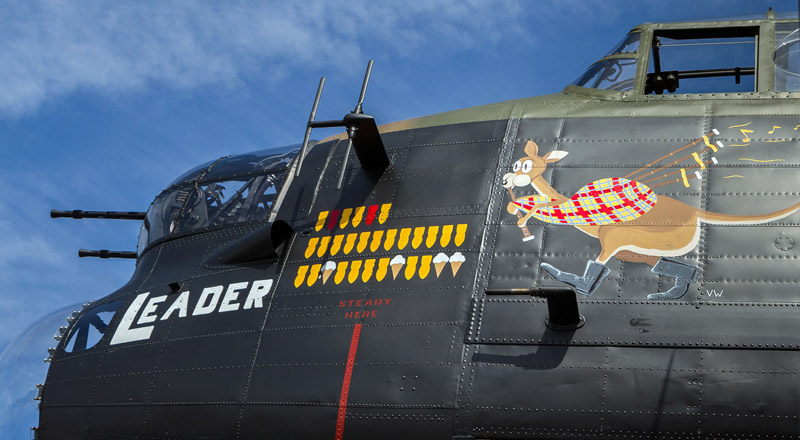
A fourth 460 Squadron Lancaster, JB657, flown by Flying Officer Randall DFC, was damaged over Berlin. After trying for 45 minutes to land at Binbrook, it eventually crashed on the bomb dump at Market Stainton on the Lincolnshire Wolds, with the deaths of all seven of the crew. The flight engineer on this crew was 21-year-old ex-Halton apprentice Sergeant John ‘Jack’ McKenzie, who despite his Scottish surname inherited from his father, had been brought up in Pembroke Dock, Wales, his mother’s home town. His mother, uncle and two brothers had been killed in a German air raid on the town on 12th May 1941 and ‘Jack’ wanted revenge. McKenzie had been the flight engineer in the crew of 460 Squadron Scottish pilot, Sergeant Jock Ogilvie, which ‘commissioned’ the kangaroo nose art on their Lancaster, W5005 ‘AR-L’, which they named “Leader”. His Welsh background was the reason for the kangaroo in the nose art being given wellington boots! His father had lost his entire family in less than three years.

